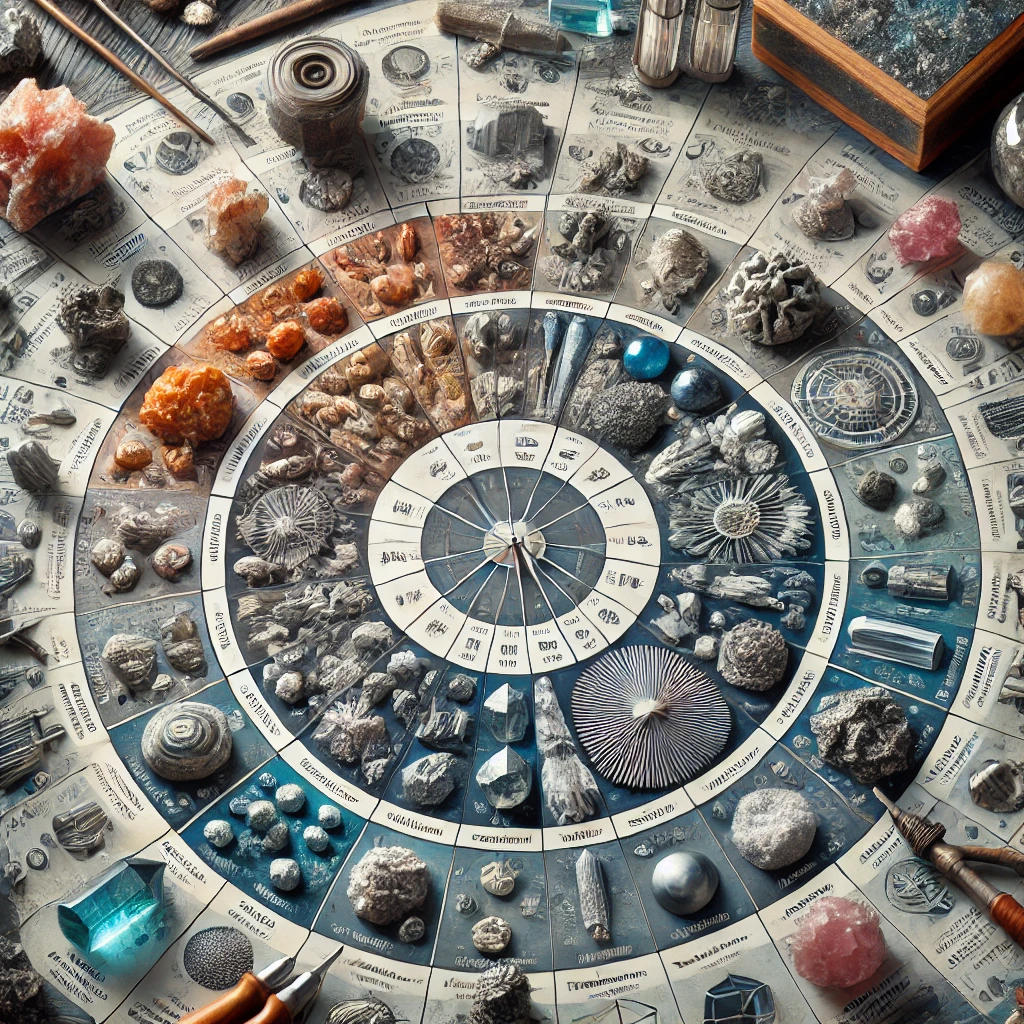Mineral wheel charts are essential tools for geologists, mineralogists, and holistic nutritionist. They provide a visual and systematic way to identify and categorize minerals based on their physical and chemical properties. Here’s a comprehensive look at what mineral wheel charts are and how to use them effectively.
What is a Mineral Wheel Chart?
A mineral wheel chart is a circular diagram that displays various minerals, typically organized by their chemical composition and physical properties. These charts help users quickly identify minerals by comparing their characteristics to those listed on the chart.
Components of a Mineral Wheel Chart
- Mineral Names: The chart includes common and scientific names of minerals.
- Chemical Composition: Information on the chemical elements that make up each mineral.
- Physical Properties: Data on hardness, color, luster, streak, and specific gravity.
- Crystallography: Details on the crystal systems and habits of the minerals.
- Occurrence: Information about where each mineral is commonly found.
How to Use a Mineral Wheel Chart
- Observation: Start by observing the physical properties of the mineral specimen, such as color, luster, and hardness.
- Comparison: Compare these observations with the characteristics listed on the mineral wheel chart.
- Verification: Conduct additional tests, such as streak and hardness tests, to confirm the mineral’s identity.
- Reference: Use the chart to reference and document the mineral’s properties for further study or cataloging.
Benefits of Using Mineral Wheel Charts
- Efficiency: Quickly identifies and categorizes minerals, saving time during fieldwork or research.
- Educational Tool: Aids in teaching mineral identification and classification to students and enthusiasts.
- Accuracy: Provides a reliable method for cross-referencing mineral properties, leading to accurate identification.
Conclusion
Mineral wheel charts are invaluable for anyone involved in the study or collection of minerals. By understanding how to use these charts, you can enhance your ability to identify and classify a wide variety of minerals accurately.

